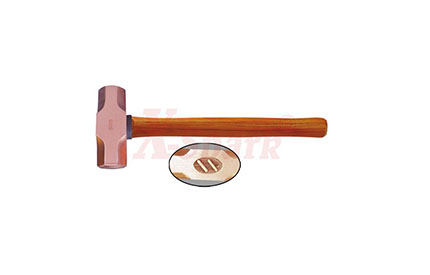The Difference Between Non-Sparking Tools And Anti-Static Tools
Non-sparking and anti-static tools have a common purpose-to preventing fires or explosions caused by flammable materials in production facilities. However, they are all designed to prevent specific hazards and should not be confused. Non-sparking tools are characterized by a lack of ferrous metals (steel and iron), which means they will not produce sparks that can be ignited under proper conditions.
Anti-static tools are carefully designed to be used in grounding equipment systems to prevent static electricity in the building from damaging electronic equipment or providing sufficient charge to cause a fire or explosion.
However, being non-sparking does not mean that the tools are not anti-static. When properly grounded, a non-sparking tool can also prevent electrostatic discharge.
When are non-sparking tools needed?
Non-sparking tools are important to use facilities, there may be an explosive atmosphere or any reason to pay special attention to the possibility of fire or explosion caused by sparks. This usually involves production facilities that contain flammable gas, mist, dust, or liquids. Non-combustible tools are commonly used in oil refineries, paper companies, and ammunition factories. Non-sparking tools can also be used in food processing facilities that use powdered milk, egg whites, cornstarch, grains, flour, or cornstarch, as these can generate combustible dust hazards.
What is a non-sparking tool?
Non-sparking tools are basically those that do not contain ferrous metals. Ferrous metals include steel and iron, in all their different iterations. Items made of carbon steel, stainless steel, cast iron, or wrought iron can generate sparks.
Non-ferrous metals include aluminum, copper, brass, silver, and lead. However, they are not the only materials for making non-sparking tools.
Common non-sparking tools are made up of:
Plastic
Brass
Bronze
Copper-nickel alloy
Copper-aluminum alloy
Copper Beryllium Alloy
Wood
Leather
Plastic is a common non-sparking material, such as shovels, scrapers, paddles, and spoons. Tools that require higher tensile strength, such as hammers or screws, are usually made of copper alloys, but because beryllium may be toxic, it tends to be avoided.
There is a possibility that even tools without a spark may cause a reaction called "cold spark" in which there is not enough heat to ignite the most flammable substance, carbon disulfide. Cold sparks will still give a feeling that sparks are occurring, but they are safe even around the most flammable substances.
When do I need to use anti-static tools?
Electronic components—especially motherboards—are very sensitive to electrostatic discharge (ESD). Simple static electricity generated when a worker walks to the workstation on the floor can damage the motherboard and render the entire assembly ineffective. Most industries do not need to worry about electrostatic discharge, but when there are combustible gases in the air, such as acetone or methane, even a small discharge can cause fire or explosion.
What are anti-static tools?
Anti-static tools are much more complicated than not containing a specific type of metal. They must be part of a complete program to safely discharge static electricity.
We are non-sparking tool suppliers. Please feel free to contact us if you are interested in our products.




